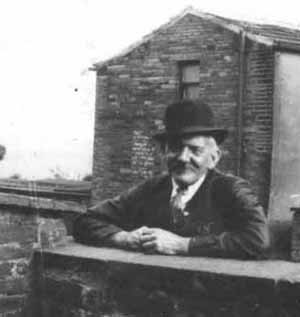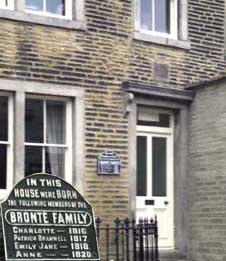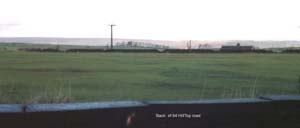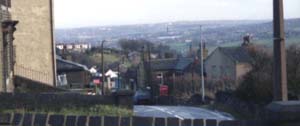|
Thornton
Thornton’s main claim to fame is that it was the birthplace of the Bronte sisters.
According to Thornton Village History -
At the time of the
Brontes' residence (1815 - 1820), Thornton was still a very small hamlet of only 23 separate dwellings. The first half of the nineteenth century saw unprecedented growth in West Yorkshire, with the population of Bradford increasing fourfold. Despite its relatively isolated location, Thornton saw a considerable rise in its fortunes, due principally to the industrial revolution and an increased demand for sandstone hewn from local quarries. Furthermore, the village street became part of the main highway between the Lake District and Leeds and Bradford, with a total of 16 ale houses serving the increasing traffic through the village.
Longbottom
The name Longbottom is said to come from someone who lived in a long strip of land in a valley. Apparently, one source is at Luddenden Foot, Halifax, in the valley of the River Calder, where there is a Longbottom Bridge and Longbottom farms.
This Reference suggests that the name comes from Richard and Thomas Longboteham living in the Luddenden Foot area around 1350.
According to the 1841 Census, Joseph Longbottom and family were the only ones with that name living in Thornton. He was born in Southowram, east of Halifax, both around five miles from Thornton. His initial occupation was a delver (old definition of a stone quarry worker).
Great grandfather John Longbottom was also a quarryman. Local folklore says that he died attempting to win a bet that he could carry a huge slab of stone from the quarry to Hill Top Road.
The local quarries could be reached via Spring Holes Lane
(MAP)
across the fields behind Hill Top Road.

Grandfather William 1930s
William did acquire some wealth in his lifetime. On passing away he left one of the Hill Top cottages to each of his children (I believe). My family’s house was 4 Long Row.
|
|

Market Street, Thornton

Fields behind 64 Hill Top Road
Hill Top Road folklore also says that the Brontes would have travelled up Hill Top Road on the way to Howarth. If the road was a main route, Joseph Longbottom, Hill Top Beerhouse Keeper in 1851, may have benefited from travellers resting following ascending the steep hill.

Steep Hill Top Road
Using FindMyPast, 1619 persons named Longbottom were identified in 1841, 1414 of them in Yorkshire. Main population areas were Halifax 353 (Southowram 17), Leeds 338, Keighley 209 (Howarth 9), Bradford 140 (Thornton 5), Bingley 107.
In 1871, with William Longbottom on the scene, the head count in Yorkshire had increased by 40%, with 90% more in Bradford including 500% in Thornton (to 25), apparently not all related.
At least between 1891 and 1901, William worked as a coal miner.
Identified Longbottom spouses were from Foster, West and Ibbotson families, all born locally. Heads of Foster families were weavers in woollen mills and the 1841 William West was a tailor.
Female family members generally worked in t’mill with some males also there besides in t’quarry or down t’pit.
Half way down the hill to Thornton, there was a well for watering horses. People up Hill Top tended to have there own broad Yorkshire accent. As they said locally “Everybody abun t’well is daft”. Welcome to the the club from a proud member.
|






